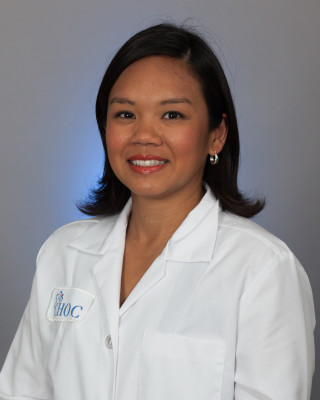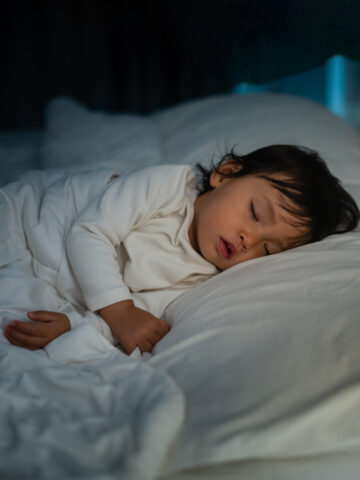By Dr. Georgie Pechulis, pediatric hospitalist at CHOC

The American Academy of Pediatrics (AAP) recently released updated recommendations on safe sleep practices for infants under one year of age, which are outlined below. Safe sleep is a top priority for all parents to reduce the risk of Sudden Infant Death Syndrome (SIDS) and other sleep-related deaths that claim as many as 3,500 infant lives in the U.S. every year SIDS is the unexplained death of an infant, even after thorough investigation, autopsy, and review of medical history.
What can be done to prevent SIDS and other sleep-related deaths?
We know there are a number of practices proven to lower an infant’s risk of SIDS and sleep-related deaths. Taking these actions can help to create a safer sleep environment for your baby. Here are a few of the key points from the AAP’s updated recommendations.
Back to sleep for every sleep
Research shows that putting your baby to sleep completely on their backs for the first year greatly reduces the risk of SIDS.
Once an infant can roll on their own, they can be allowed to remain in the sleep position that he or she assumes.
To help prevent flat head syndrome or positional plagiocephaly, supervised and awake tummy time is recommended.
Close but Not Too Close
It is recommended that infants sleep in the parents’ room, close to the parent’s bed, but on a separate surface designed for infants. This is recommended ideally for the first year of life, but at least for the first six months.
Evidence shows that sleeping in the parents’ room but on separate surfaces decreases the risk of SIDS by as much as 50 percent.
Separate designated sleeping arrangements can prevent entrapment, suffocation and strangulation that can occur when infants sleep in an adult bed.
Keep it Simple
Keep soft objects and loose bedding away from the infant’s sleep area to reduce the risk of SIDS, suffocation, entrapment and strangulation
Although they are widely available on the market, crib bumpers and pads, stuffed animals and toys, pillows, and blankets are not recommended in the crib as they can easily block your baby’s breathing. The crib should only contain your baby, the mattress, and a fitted crib sheet.
If appropriate for the climate, infant sleep clothing, such as a wearable sleep sack or blanket is preferable.
Consider offering a pacifier at nap time and bedtime
A pacifier has been shown to have a protective effect, even if it falls out of the infant’s mouth. It doesn’t need to be reinserted if the baby falls asleep. It is not recommended to use any attachments to the pacifiers. Ensure breastfeeding is well established prior to any use of pacifiers in breastfeeding babies.
Avoid overheating and head covering in infants
Avoid the use of commercial devices that are inconsistent with safe sleep recommendations
Ensure that products conform to safety standards of the Consumer Product Safety Commission
Car seats, strollers, swings and infant carriers are not recommended for routine sleep, per the AAP’s recommendations. If an infant falls asleep in any of the above devices, they should be moved to a safe sleep surface as soon as is safe and practical.
What else is new in the recommendations?
Do not use home cardiorespiratory monitors as a strategy to reduce the risk of SIDS.
The AAP’s SIDS Task Force also addressed infant feeding and comforting in bed. As always, it is recommended to have your infant sleep separately in a designated surface apart from the parent sleep area. However, the AAP does recognize that parents frequently fall asleep while feeding their infant and evidence suggests that is it less hazardous to fall asleep with the infant in the adult bed than on a sofa or armchair. No pillows, blankets, sheets, or any other objects should be in the bed. Many infants who die from SIDS and sleep-related deaths are found with their head covered in bedding.
Infants who are brought into bed for feeding or comforting should be returned to their own crib or bassinet when the parents are ready to return to sleep. If a parent does fall asleep, the infant should be returned to their separate sleep surface as soon as the parent awakens.
Among the above recommendations, parents should avoid smoke exposure, alcohol and illicit drug use during pregnancy and after birth, as these can also increase risk of SIDS. Regular prenatal care and immunizations per the Centers for Disease Control and AAP guidelines are also encouraged. And as always, breastfeeding is recommended and is known to provide a protective effect. Any degree of breastfeeding has been shown to be protective, increasing with exclusivity.





